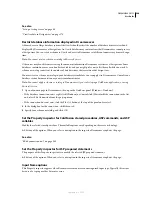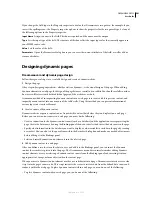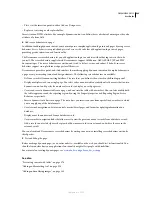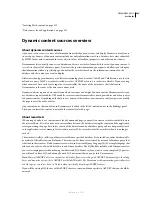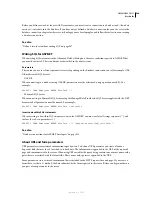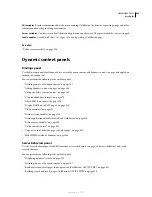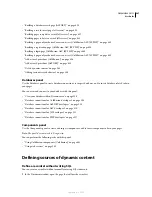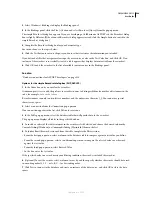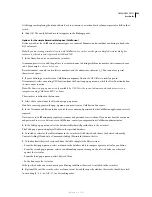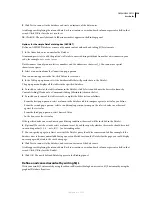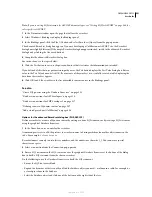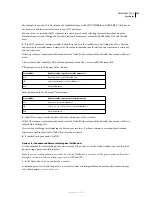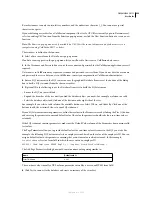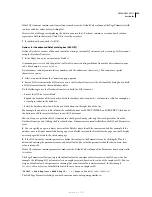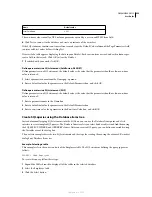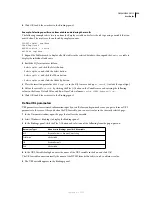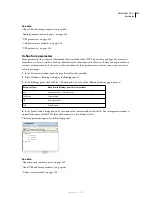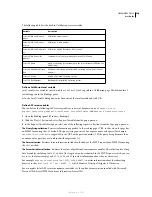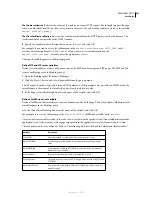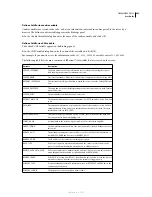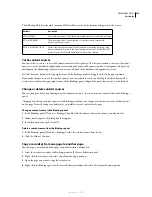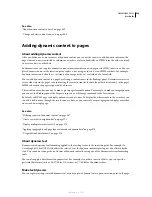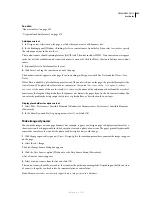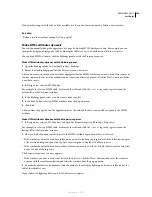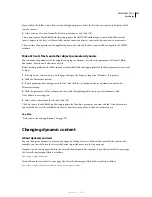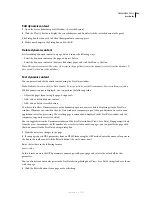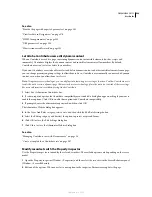
DREAMWEAVER CS3
User Guide
554
If the SQL statement contains run-time references, make sure the Default Value column of the Page Parameters field
contains valid test values before clicking Test.
If successful, a table appears displaying the data in your recordset. Each row contains a record and each column
represents a field in that record. Click OK to clear the recordset.
7
If satisfied with your work, click OK.
O
ptions for the advanced DataSet dialog box (ASP.NET)
Define a DataSet as a source of dynamic content by writing a custom SQL statement, or by creating a SQL statement
using the Database Items tree.
1
In the Name box, enter a name for the DataSet.
A common practice is to add the prefix
ds
to DataSet names to distinguish them from other object names in your
code. For example:
dsPressRelease
DataSet names can only contain letters, numbers, and the underscore character (_). You cannot use special
characters or spaces.
2
Select a connection from the Connection pop-up menu.
3
Enter a SQL statement in the SQL text area or use the Database Items tree at the bottom of the dialog box to build
a SQL statement from the chosen database tables.
Do the following to use the Database Items tree to build the SQL statement:
•
Ensure the SQL text area is blank.
•
Expand the branches of the tree until you find the database object you need—a column in a table, for example, or
a stored procedure in the database.
•
Select the database object, and click one of the buttons on the right side of the tree.
For example, if you select a table column, the available buttons are SELECT, WHERE, and ORDER BY. Click one of
the buttons to add the associated clause to your SQL statement.
You can also use a predefined SQL statement in a stored procedure by selecting the stored procedure from the
Database Items tree and clicking the Procedure button. Dreamweaver automatically fills in the SQL and Parameters
areas.
4
You can specify a page to redirect users to if the DataSet query should for some reason fail. For example, if the
database were to become unavailable during a query and failed to return the DataSet for the page, you could display
an error page with a link to the site’s home page.
5
If the SQL statement contains parameters, define their values in the Parameters area by clicking the Plus (+)
button and entering the parameter’s name and default value (the value the parameter should take if no run-time
value is returned).
If the SQL statement contains parameters, make sure the Default Value column of the Parameters box contains valid
test values.
The Page Parameters allow you to provide default values for run-time value references in the SQL you write. For
example, the following SQL statement selects an employee record based on the value of the employee’s ID. You can
assign a default value to this parameter, ensuring that a run-time value is always returned. In this example,
FormFieldName
refers to a form field in which the user enters an employee ID.
“SELECT * FROM Employees WHERE EmpID = “ + (Request.Form(“
FormFieldName
”))
The Add Page Parameters dialog box would contain a name-value pairing similar to:
September 4, 2007

